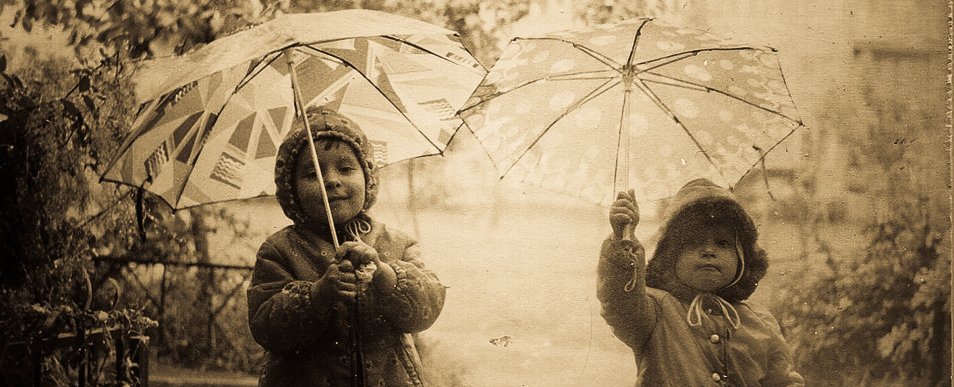Are there indeed such things as the “traditional family”, “traditional sex” and “traditional love”?
If we think about the life of the ancient tribes where every “wife” belonged to every “husband”, the extended nature of rural families who worked in subsistence farming in the pre-industrial age, the persistently high divorce rates, social upheavals, and demographic losses during the whole of the 20th century, the nuclear family’s “golden age” can be hardly found in history. The image of a bourgeois heaven with its breadwinning husband and stay-at-home housewife, which is being instilled by the current ideology as a “traditional family”, sends us back to the Western society of the 1950s. In our reality women have been involved in production for a hundred years already. They do it not only for the financial independence and personal development. For most, working outside the family is the only way to survive.
In terms of the way of living, tradition is no more than a figure of speech. People arrange their private lives in the ways most comfortable to them out of all the currently available alternatives.
To everyone of us family is the supporting circle of the people whom we ourselves consider family, not the household arrangement that ideologists choose for us as a standard.
How can there be a tradition of sex when the notions of sexuality have changed dramatically in our region within the past 25 years alone? Back in the late ‘80s it was unimaginable for the media to discuss pleasure techniques or advertising for practical workshops with detailed illustrations that invited people to diversify their sex lives with practices going beyond conjugal contact aimed at procreation. Speaking of romantic love (at least within the concept of heteronormativity), the idea of an equal partnership also only came to us in the ‘90s.
The rhetoric of “traditional family values” which associates morality to a certain type of household arrangement is an escape to the “better past” which has never existed. The current ideology aims to convince us that it is marriage that guarantees security, satisfaction, pleasure, and care, but all those attractive qualities of life are available outside of marriage as well.
If someone is not married it does not mean that they are not romantically involved, just as having a romantic relationship cannot guarantee anything certain. If someone is known to be married, this does not necessarily signal that the union is a result of romantic sentiment. Neither will a stamp in the passport be a precondition for the spouses to necessarily live together and/or even be in contact with one another. We cannot know for sure whether these people have regular sex with one another, and if they do, what exactly they practise and whether a third or fourth party is involved, and if so, whether it happens openly or in secret.
There is no way for us to know if a couple has children, and if they do, whether they both are the parents. We don’t know how many people provide for that family and what principles they base their economic relations one if they have any. Neither do we know if these people share domestic work, if they are close friends, if they exchange emotional care equally, if they have common interests or friends. Also, a marriage certificate will not mean that the partners are morally or physically safe.
But if marriage provides no guarantees, why is this type of household arrangement glorified by ideology? If we imagine the purely utilitarian value of a family as a group within which care is given to the dependants (children and others incapable of work) as a moral duty, then, given the decreasing state participation in citizens’ welfare, one would expect that all kinds of support communities should be valued: gay marriages, non-romantic household partnerships, interest-based communes.
It would seem that the more legitimate care-giving designs, the lighter the burden for the state.
The problem is that conservative post-Soviet family policy makers believe the gendered division of family roles to be rational. In other words, they believe the myths of “femininity” and “masculinity”. To be even more precise, it is the “femininity” they bet on as the “innate desire” of women to take care of others, selflessly and for free.
However, the paradox is that the harder the pressure of the “traditional family values” rhetoric that motivates people to arrange their caregiving practices around a specific form of heterosexual couple, the fewer today’s men and women’s chances to match the imagined ideal.
The Dreamlike Love
The main reasons for the fragility of the post-Soviet marriage, according to experts, are women’s overburden as they have to reconcile professional activities with family duties, men’s low participation in household work, male alcoholism, and the conditions of the contemporary labour market. This means that it is the very ideology of traditional gender division that shakes the boat of marriage, dividing people into those who are “meant to care” and those who are freed from domestic problems.
It is curious that this very value system also prevents many from getting married. In traditional society, men are encouraged to enter a union with women whose age and educational level are somewhat lower than their own. It is vice versa for women: they are expected to marry older and better educated men.
In Belarus and Russia, the number of educated women is higher than the number of educated men, while the number of undereducated men is surpasses that of women. The gap between the ideal marriage and reality is further deepented by men’s low life-expectancy. But the prevalent ideas of who is a good match for whom do not only impose the need to adhere to the dimorphist standards. The very idea of romantic love which the nuclear family is supposed to be based on is highly problematic in practice.
Сulture portrays romantic love as the most important event in life. Popular love stories instill the thought that one’s life will magically change to the better once and for all as soon as one finds their “other half”. Paying the high price tag for the “meet your romantic partner” workshops, women are missing the fact that they are successfully integrated into the labour market and are, indeed, independent.
Independence is the enemy both for romantic love and the whole ideological machinery built upon it.
The modern concept of romantic love is based on the ideal of all-consuming, self-sacrificing maternal care. In popular imaginary, a couple’s relationship is perceived as “true love” if the partners’ primary concern is to satisfy each other’s needs.
The unattainability of the ideal of love is further aggravated by the traditional gender division which prescribes self-realization in the public sphere to men and in the private to women. The self-sacrificing ideal of love is contrasted with the image of traditional masculinity, emotionally thick-headed and aimed at personal achievement.
In post-industrial society, a successful identity is mainly defined through the creation of a unique personal history associated with professional success. Lack of education and career motivation border, in turn, on the threat of poverty. This means that the romantic couple cult and the individualist ideology direct citizens towards reaching completely opposite goals.
The latest transformations in marital behaviour have created a setting that makes it ever harder to find “your person” or “fall in love”. Within the span of my life alone the women’s “critical age limit” for creating a marital bond has moved away from 30 and is no longer set at any clear point. The more opportunities the open time framework and new communication technologies present, the harder it becomes to make a choice and settle down, giving up the hope to meet “a better catch”. In the world of universal commodification we try hard to exchange our private assets for ones that are at least not worse, and ideally better.
In the present circumstances, we normally make several long standing love bonds in the course of our life. But the media keep fabricating the elusive standard of a romantic connection that happens once and for all “till death do us part”. The popular love rhetoric attributes a tragic meaning to the breakup of a romantic bond. The duration factor that serves as a criterion for success of a relationship within a couple, often devalues the experience gained.
Love tragedies usually focus on loss and rarely showcase survival stories, skills, or talents that help us live longer and overcome hardships.
At the same time the relationships that formally end with a divorce or break-up can last for decades. Often without even realising it, we allow our significant others to influence us not just from afar, but from the beyond. Everyday life has way more dramatic encounters and partings than popular culture would prefer to admit.
Wishing to “repeat” a meaningful story or, on the other hand, “never to make the past mistakes again”, we base our actions on the experience we have, staying in contact with the people who important to us. But all the logical arguments that explain why a story packed in the 90 minutes of screen time cannot be turned into reality wane before the hypnotic idea of a “quick and effective salvation” through a romantic encounter.
What Hides Behind the Myths of Men’s “Strength” and Women’s “Weakness”
Picking up on the unspoken anxieties about the latest demographic changes, the market reacts with a growing supply of various workshops for women that promise to teach them how to “find the right partner and make him stay”. This kind of service, which has become a prominent phenomenon in the post-Soviet countries, both fits in perfectly with the current political context and has a strong connection to the recent past.
Among other reasons, I associate its popularity with women’s perplexity in the face of the unprecedented labour market demands that are hard to reconcile with family duties. In our part of the world, getting rid of the double women’s burden by means of a good marriage that relieves one of the need to work outside the family is an idea that sells well. However, by selling the idea of “salvation”, the market only reinforces the norm of the double workload for women.
The idea of women’s massive withdrawal from the labour market (even if women had really wanted it) is utopian. Most men’s actual economic status does not let them support the family with their wage alone.
Besides, it is far from every household that is organized around a heterosexual couple.
The “family saving” market’s target audience is women only. Women are also assigned the role of active players in family politics: they are supposed to take the initiative to “find” a man as well as maintaining family relationships later on.
This branch’s marketing strategies are based on manipulation techniques that instill in the female customers the idea of their own inferiority. Blinded with the promise of a Prince Charming, potential workshop-goers cannot stay critical towards the second part of the message which affirms men’s symbolic superiority, amounting in essence to their infantilisation, through a giveaway game.
Experts believe that the custom of playing giveaway that encourages women to take more responsibility while avoiding gender-based conflicts by renouncing leadership claims, dates back to the post-war period. By the late ‘40s, as the male population losses were tremendous, the ideology of female devotion became a strategy for restoring the masculinity crippled by the war.
The Soviet family ideology was based on “three whales”: silencing sex, maintaining gender peace and cheerfulness. The silence over sex could be explained by Soviet ideologists’ fear of Freud’s theses on the instability of heterosexuality. They were deemed dangerous because they could suggest uncontrollable desires to the working masses. Therefore, all public discussion of sex was forbidden. Gender peace was maintained by the male population’s low numbers, and the cheerfulness was incorporated into the concept of Soviet citizens’ enforced happiness: they could not be unhappy since they lived in the best country in the world.
Nowadays there is no shortage of men. The phrase “right partner” stands for a man of a certain economic status and ethnic background who has a healthy lifestyle and wants to create a family. From the viewpoint of the existing ideological machinery, most men do not currently fall into this category.
Along with “family-oriented” workshops for women, “anti-family” pickup workshops for men gain popularity. Within the operating dimorphist logic, it is rather unclear how women who are encouraged to forge long-term emotional bonds may have any common goals and communicate with men who are being oriented at avoid such bonds.
The marriage and divorce statistics indicate that the “improve your femininity” workshops are failing to keep their promise. Judging by the expansive supply, however, they are in high demand. I attribute this to the business model based on a specific power structure within the study groups, and the fact that their methods are unverifiable.
The position of knowledge that the workshop leaders assume towards their clients implies placing responsibility for “the lack of results” on the women themselves: “You cannot find or keep the “right” partner because you are not feminine enough”. Because the degree of “femininity improvement” cannot be measured, the trainers can sell ever more “advanced” courses at increasing prices.
However, the chief marketing strategy that allows the female workshop business to thrive, and the asymmetric social policy to exist, lies in convincing women in their inferiority throughout life and in attributing to a romantic couple the meaning of the most important marker of personal success.
Simone de Beauvoir wrote that the woman is not a biological identity but a specific social position. An individual does not become a woman at birth but when they accept the idea that a woman is a sensitive, gentle being, and gets accustomed to the daily rituals of “femininity”. The concept of “femininity” fabricates the idea of an inferiority that can only be corrected by obtaining the status of a woman chosen by a man.
I’ll quote an excerpt from an advertisement for a women’s workshop where the author uses the classic technique of instilling the ideas of “femininity”:
“You have bought your own apartment. When you don’t feel like cooking, you go to a restaurant. Or you take out your unmarried girlfriends. You enjoy yourself on trips abroad. Your life’s a success, attagirl! Your mom can be proud.
But do you remember the last time you felt like a real woman? Flowers, admiring looks, compliments? When have you last felt your beloved hold your hand and look into your eyes with adoration? As he gently kisses you in a way that makes you lose control, and it is only Him in your thoughts, your man, the one and only? If it is hard for you to remember this or you cannot do it at all, it’s time to change something!
Are you still unsure whether you should come? Those who did decide to participate, have already got their results: they got married. Men give them expensive presents. Their sex life has improved. Many have quit smoking and lost weight”.
This excerpt showcases stigmatising rhetoric of the advanced kind, adapted to the modern day situation. The author of the message adresses successful, career-oriented modern women and sells the product by instilling guilt and shame into them in several ways at the same time.
Potential clients’ individual achievements are devalued when contrasted with having no man in their lives who would confirm their “chosen” status. The problem of the ideology that convinces women that their main goal in life is fulfilling themselves through a romantic partnership is that the symbolic capital that is being imposed on us is nonconvertible under market conditions.
In a market society, access to goods opens through possessing material resources. In other words, the prices are the same for everyone in the store. There are no discounts for those who “don’t care that much for education or career”. Caring about family members cannot be converted into money if it’s not a commercial service and is done by women “out of love”.
This rhetoric convinces women that beauty and youth are our main capital, which can be exchanged for “men’s money”. But in fact, this idea is a trap. In the society of magazine cover standards, all people are vulnerable to the ideas of “norms”, which allows for the beauty industry to thrive by selling the ideas of losing extra weight and getting rid of signs of ageing.
Since childhood women are taught to doubt their abilities. To show success in the public sphere for a woman is linked, especially if she competes with men, to the fear of “losing femininity” as her most important asset in the traditional value system, and to the threat of being stigmatised for “unacceptable gender behaviour”. Popular beliefs convince us that all the world’s achievements are the merit of man’s intellect, strength and courage, while successful women are “manlike monsters”.
From a very young age, women absorb shaming phrases directed at men, like “you’re such a girl!”, and learn, aside from the inferiority complex, misogyny, fear, and contempt towards other women. If being a woman is not valued, it is hard for women not only to respect themselves, but also to respect other women.
Essentially, the “feminisation” of women is a fetish that hides the fact that men are not as masculine as the myth postulates, while women are not as feminine, and the current social order holds on the nostalgia for a past that never was.
This context could be used to explain the current fight against “homosexuality propaganda” as well. In order to reinforce the myth of “tradition”, it is necessary to artificially create and demonise a group of “others”. Without “others” the boundaries of the “norm” are way too unclear. Especially when half the population do not fit into the imagined standards.
Anna Shadrina для MAKEOUT
















